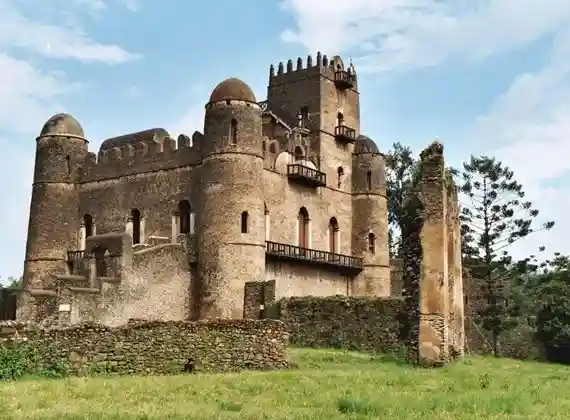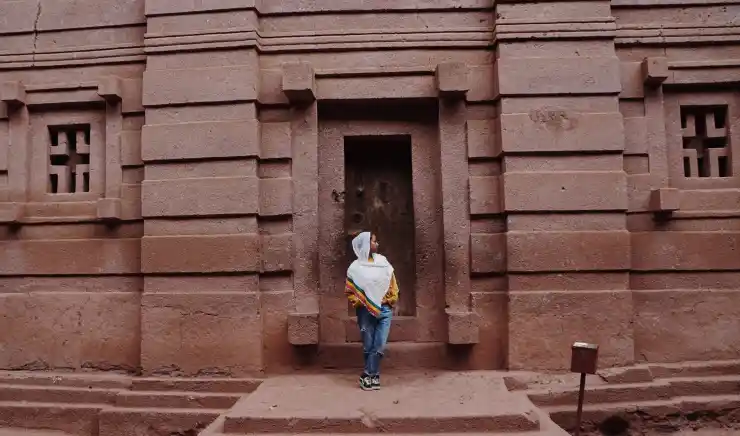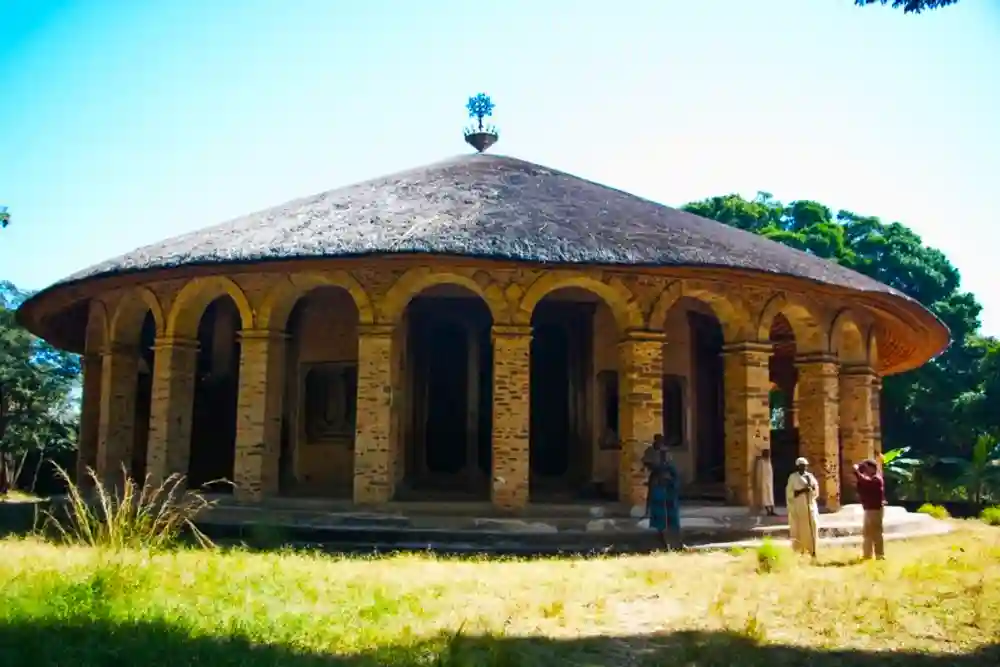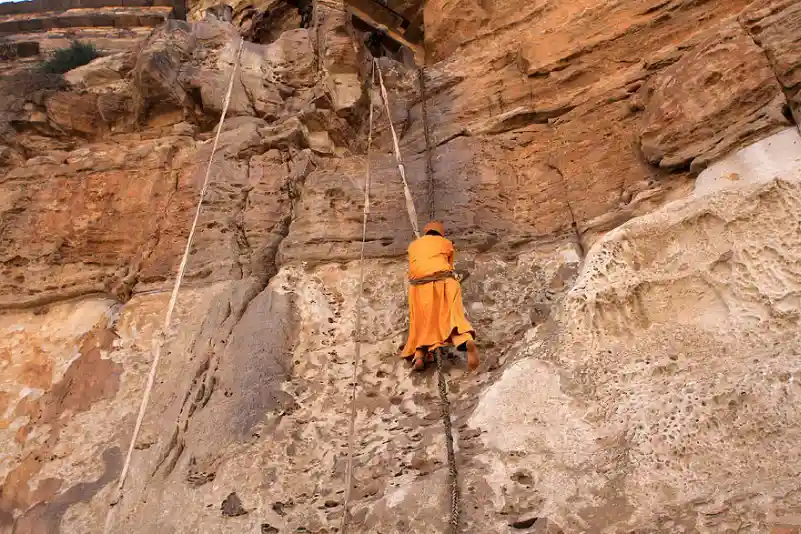Gondar
HISTORICAL ATTRACTIONS
Overview
Ethiopia has a rich history and an unique ancient heritage which dates back to more than three million years of human history
Much of Ethiopia’s history lies within its villages, monasteries, landscapes, castles, churches and museums. The first Homo sapiens are considered to have emerged from Ethiopia around 160,000 years ago. Dating back to the dawn of humanity, Ethiopia has a tremendously rich history. Historic monuments in Ethiopia are worth visiting. With each civilisation leaving behind artifacts, humans have been navigating life in Ethiopia for millennia and clues that have helped us slowly unravel the origins of humanity and life on Earth.


Gondar
Gonder was the 17th Century capital of Ethiopia and is famous for its medieval castles and churches. Gondar’s imperial compound contains a number of castles built between 1632 and 1855 by the various emperors who reigned during this period. These spectacular castles, unlike others in Africa, display richness in architecture that reveals the Axumite traditions as well as the influence of Arabia. Gondar was a famous royal city of the 17th and 18th centuries, a city of palaces and castles. In a year 1636 for the first time in Ethiopia’s history, King Fasiladas began with the construction of a walled palace. So in the course of the century, a huge fortification was built with several royal palaces and a number of churches.
Lalibela
Lalibela stands on soft red volcanic rock and was originally known as Roha. It was later renamed Lalibela when King Lalibela was credited with building the rock-hewn churches there in the twelfth century. Lalibela is now regarded as one of the greatest Ethiopian architectural wonders and is ranked the eighth most incredible historical site in the world by UNESCO. Axum and Lalibela have in common architectural and stone works, which illustrate Ethiopian civilisation at great length.
In Lalibela there are 11 churches cut out of solid red volcanic rock, which are constructed to represent Jerusalem. The churches are divided into Northern and Eastern groups of churches by a rock-cut channel (river) called Yordannos (Jordan River) and connected by narrow and deep passages. Bieta Medhane Alem is the largest and most impressive monolithic church. Of all the churches, Bieta Giyorgis (Saint George) is particularly stunning and beautiful, situated apart from the other churches to the west, intricately carved into the shape of a cross. All the churches are still used as places of worship.
Axum
Axum is commonly called as Ethiopian Rome. It is the capital of the oldest Christian kingdom in the world, the largest outside the Roman Empire and crossroads to caravan roots to Arabia, Egypt and Nubia.
The St. Mary of Zion Cathedral was established in 1665 under Emperor Haile Sellasie I, the last emperor of the Solomonian dynasty. It is one of Ethiopia’s few religious buildings in which people gather to celebrate mass which lasts for several hours.
In the new cathedral, a 600 year old bible forms part of its well preserved treasures. Axum is dominated by about 130 Stelae. The stelae of the Axumite culture were created from natural stone from which numerous grave sites were built. The decoration of the stelae is a kind of living room. A construction method that combines layers of stone with wooden beams. At the time of Christ’s birth, Axum was a prosperous center of power and culture. The largest stela lies in pieces on the ground, one of the largest monoliths of the world. The relative modest complex of the palace of the Queen of Sheba, the remains of Gudit stela Field which is named after the queen who said to have destroyed Axum, goods carrying on camels, small huts made of wood and clay, Mai Shum which is the bath of the Queen of Sheba, and tombs of ancient kings are other attractions of Axum.
Bahir Dar
The tropical-like town of Bahir Dar with its palm-lined avenues and colourful markets stands on the southern edge of Ethiopia’s largest lake, Lake Tana. Local fisherman still use (tankwa) papyrus canoes and the lake’s peninsulas and islands are home to more than 20 monastic churches.
The spectacular 45 metre high Blue Nile Falls is only 32 kilometres away. The fall’s local name, Tis Isat, reflects the awe-inspiring image of the ‘smoking water’ as the river crashes into the gorge below.
Lake Tana has attracted mystics and religious people for centuries and most of the islands’ monasteries, house invaluable historical documents, relics, beautifully painted walls, and the tombs of mediaeval Ethiopian kings. Daga Istafanos, with its priceless collection of icons, Kibran Gebriel, with many ancient books, and the impressive and beautiful Ura Kidane Mirhet and its intriguing frescoes, are among the many that may be visited.


Debre Damo
The 6th century monastery of Debre Damo is situated 76 Kilometers from Axum which is said to have the oldest existing intact church in Ethiopia. It has an elevation of 2216 m above sea level and it has a collection of manuscripts and for having the earliest existing church building in Ethiopia that is still in its original style. Women are not permitted to enter the monastery. Local tradition says that Abune Aregawi, one of the nine Saints, built the church in the 16th Century. The Monastery of Debre Damo can only be reached by rope pulley.
Rock Hewn Churches of Tigray
Tigray Churches are famous for their picturesque location, beautiful history and somewhat difficulty to reach. Whilst some of them are an off-road drive and a 5 minute walk up the stone stairs, others require walking for hours, climbing vertical rock shelves, and an ability to let go of your fear of heights. The rock churches are found in Gheralta, Tsaeda Imba, Atsbidera, Haramat, Ganta afeshum and in many other places scattered unevenly and some are famous for their stone workmanship, ancient paintings and old manuscripts, and others known for their magnificent view and difficult ascent.
Harar
Harar was established by Sultan Abu Beker Mohammed in 1520. Harar, the Holy City of Ethiopia’s Muslim community, is believed to be the forth-holiest city after Mecca, Medina and Jerusalem. The old City Wall of Harar is the main attraction and symbol of Islamic architecture. Harar has approximately 90 mosques, which form the largest concentration of mosques in the world. One of Harar’s main attractions is the hyena man who feeds hyenas on the outskirts of the town every night.
Lake Tana Monasteries
There are 37 islands that are scattered about the surface of Lake Tana, out of which some 20 shelter churches and monasteries of immense historical and cultural interest. These churches are decorated with beautiful paintings and house innumerable treasures. Because of their isolation they were used to store art treasures and religious relics from all parts of the country.
Kebran Gabriel: is renowned for a magnificent manuscript to the Four Gospels which is believed to date back to at least the late fourteenth or early fifteenth century.
Ura Kidane Mehret: is more decorative with a huge, conical thatched roof is painted with scenes from Biblical lore.
Daga Istifanos: is considered one of the most sacred on Lake Tana, and said to have served as a temporary hiding place for the Ark of the Covenant. On this stands the church of Saint Stifanos which houses the Holly Madonna painted around 1434. The real historic interest lies in its treasury where there are glass-sided coffins containing the mummified remains of several of the former emperors of Ethiopia.
Tana Cherkos: this ancient monastery is found on the eastern shore of Lake Tana.
Tradition tells us that St. Mary rested here under a wall during her flight to Egypt, and stayed for three months and ten days. The monks claim that they owned a necklace which she left when she departed.
It is also said that the monastery was a sacred place of the Jews. Menelik I and the Jewish nobles, after fleeing from King Solomon, brought the Ark of the covenant to this monastery and built a temple over it, which was decorated with precious stones. Six hundred years later, the Ark was brought to Axum.
